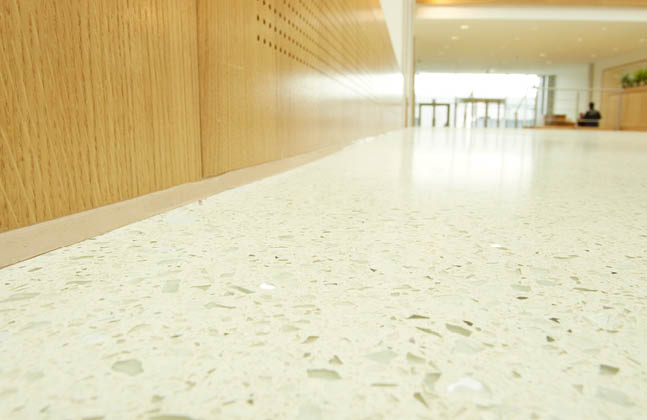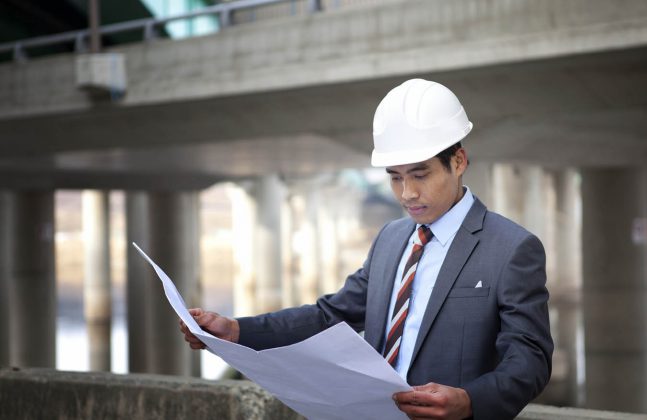When starting a new construction, there is much to consider. From smart money spent to smart money saved—facility owners are bombarded with one crucial decision after another. Therefore it is important to be aware of common issues in new construction before starting any new project.
Safety Issues in New Construction
Construction sites can be hazardous areas. Some of the dangers — like heavy machinery and equipment are quite obvious. Yet some issues can be hidden from the naked eye and can cause just as much harm.
Take Silica for example — a microscopic dust or airborne material that is a byproduct of grinding, cutting, or drilling materials such as concrete.
Being called the “new asbestos,” once silica comes into contact with your lungs, it can cause serious issues such as cancer, progressive massive fibrosis, and kidney disease. While this is a relatively new discovery, it is crucial that both the facility owner and construction team be aware of this issue per OSHA standards. Setting up and following a written exposure control plan is key to providing a safe and effective work environment.

The use of heavy machinery and equipment is just one of the dangers to flooring contractors
Wall Base issues in New Construction
Typically, wall base is one of the last facets of construction. It is generally a smooth process and goes a long way in bringing any space together. However, when poor communication occurs between the owner and a general contractor, issues can arise.
Take this situation for example — a drywall crew and a flooring team have recently completed their scheduled tasks. The drywall crew leaves and the flooring team begins work on implementing the desired vinyl base option. Once completed, the facility owner walks through and notices that the vinyl base is uneven and wavy throughout. Taking a closer look, it becomes clear that there is too much space between the drywall and floor leaving nothing for the adhesive to cling onto.
Not only is this an issue from a visual perspective, but it is also an issue of who is at fault. Should the drywall crew have run the wall to a lower point? Or should the flooring team have instructed the owner of the matter before base install?
While both are logical points of blame, having this scenario in mind can be helpful for both facility owners and general contractors. Laying out possible “what ifs” and setting up a plan of action are key in keeping issues at a minimum and turning design visions into design realities.

A wall base is often one of the last facets of construction
Moisture Issues in New Construction
It’s no mystery that the leading cause of flooring failure is moisture. In fact, industry experts say that nearly 85% of installation failures are the result of moisture issues. Left untreated, moisture can cause adhesive failure, promote mold and mildew growth and, in time, result in product delamination, curling or bubbling. Product and installation warranties require minimal moisture content, contamination, and emission levels to be maintained before, during, and after installation. If these conditions aren’t met, your warranty can be voided.
However, it is up to you to determine if this expense is worthy of being a part of the budget. Should you simply roll the dice, defer, and save money in hopes that your flooring isn’t impacted? Or should you spend the money now to test for moisture and have the peace of mind in knowing that your flooring is protected?
Moisture testing requires sampling your slab for moisture content and vapor emissions before installation of any products. The universally recognized testing methods for moisture are ASTM F1869 for calcium chloride and ASTM F2170 for relative humidity. These tests measure the moisture emitted and contained within the concrete slab. These tests last between 60-72 hours and require the environment to remain at 75°F (± 10°F) with a relative humidity of 50% (± 10%) for 48 hours prior to and during the test.
To help you weigh your options, let’s take a closer look at the method of moisture testing and the havoc that moisture can create when left untreated.

Nearly 85% of installation failures are the result of moisture issues
How Can a Specialty Flooring Contractor Combat These Common Issues?
General contractors and architectural firms need a flooring partner they can trust from bid to delivery. In the search for such a partner, particular attention should be paid to a company’s level of experience. Experience adds value by reducing risk and providing stability (from both a financial and accountability standpoint) to your project. A specialty flooring contractor that understands the industry can help to find savings in unexpected places and predict potential hazards before they cause any issues or delays.





